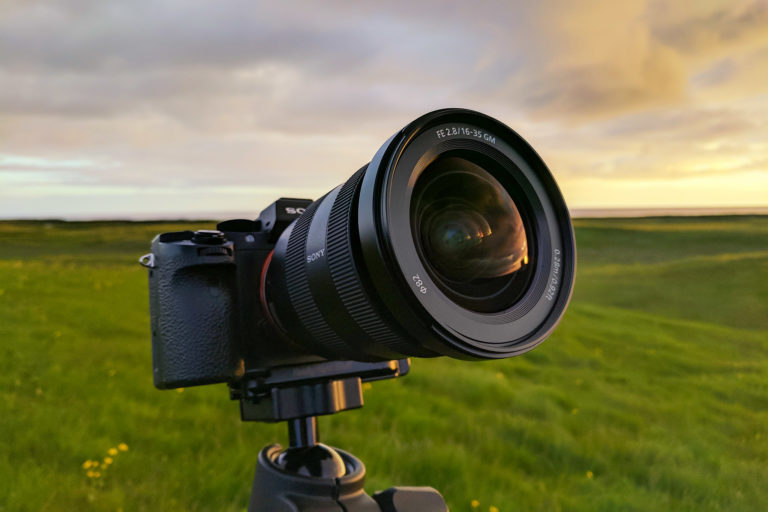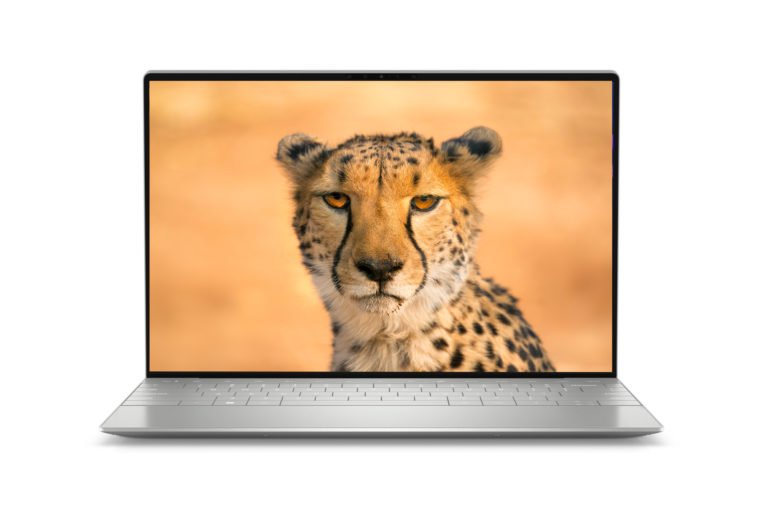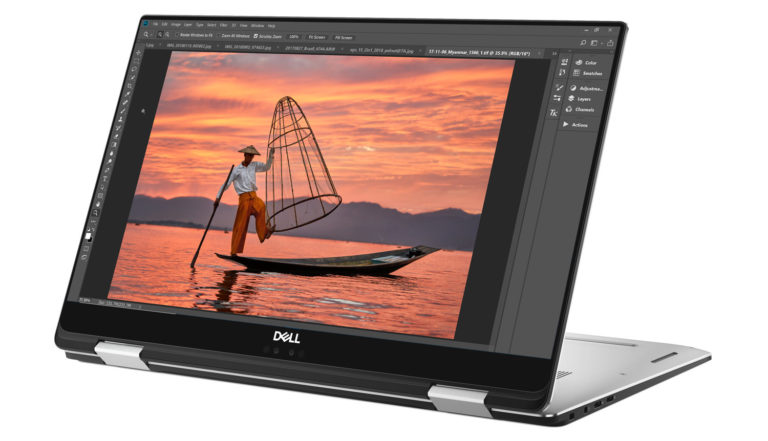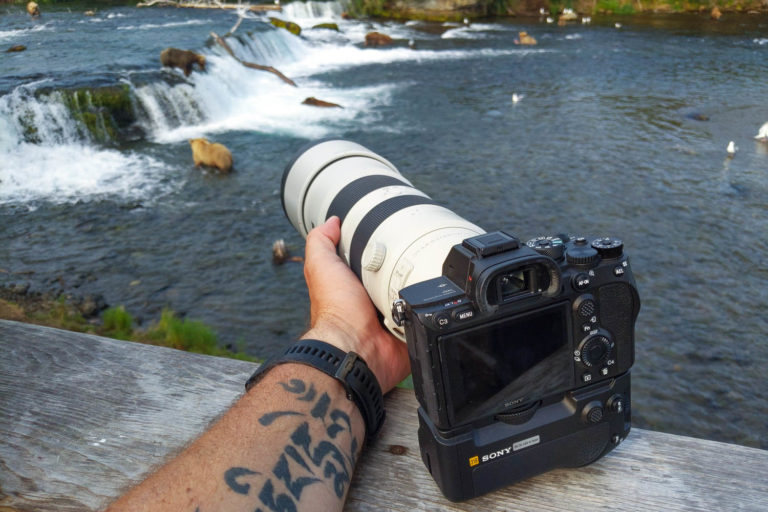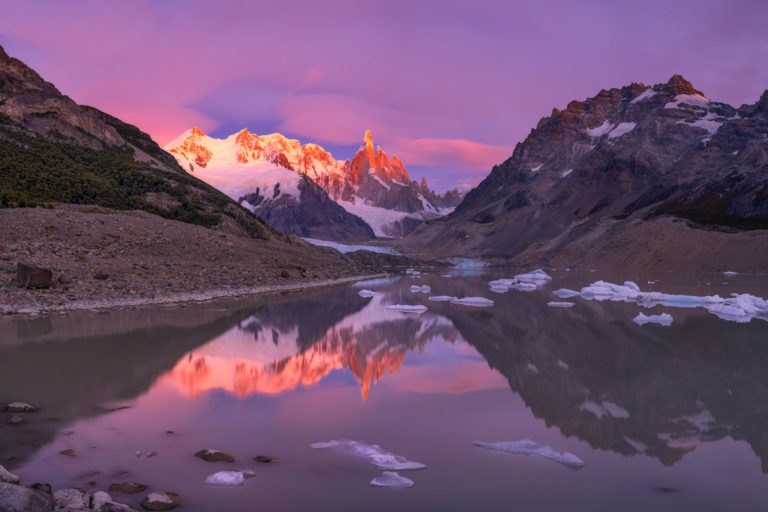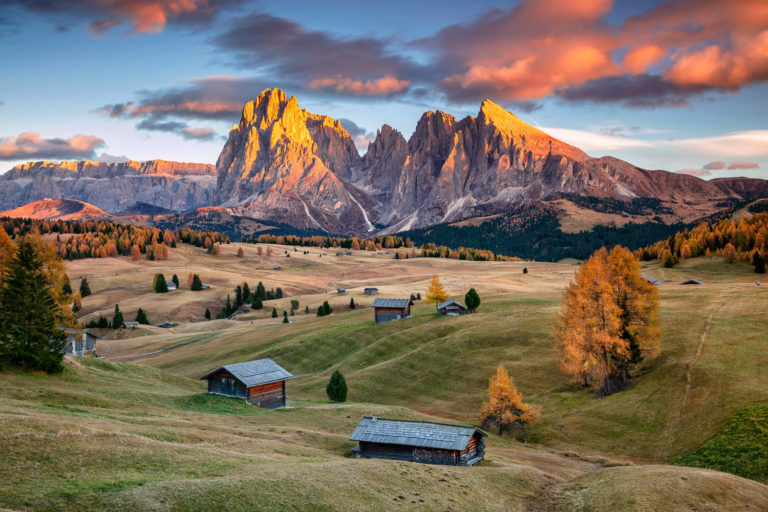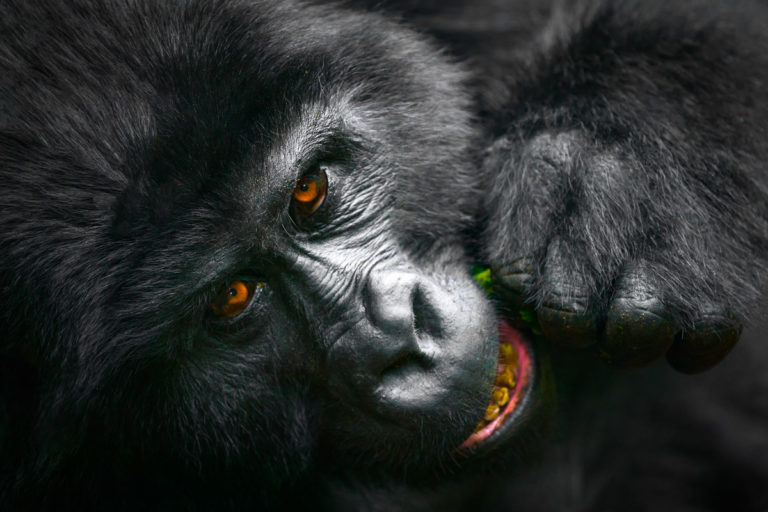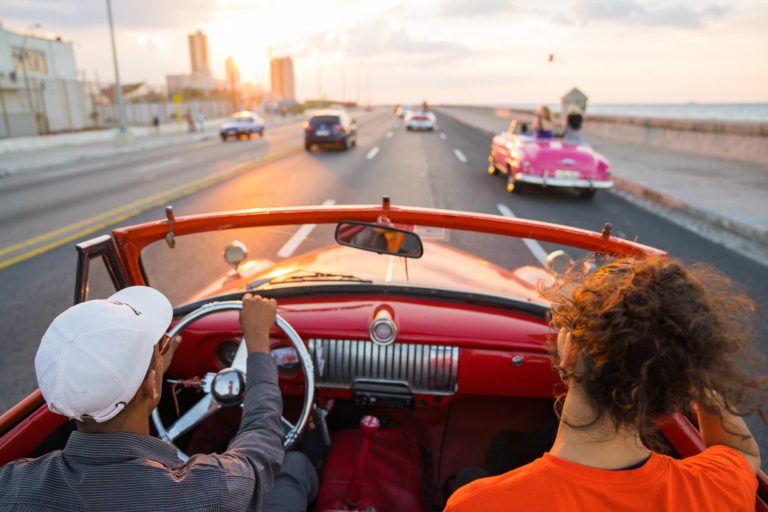When it comes to mirrorless cameras, there is little doubt that Sony is at the forefront of the pack, paving the way forward. In just a few short years they have become the industry leader, controlling over 70% of the mirrorless camera market worldwide and close to 70% of all camera sensors as well (Mirrorless, DSLR and Cell Phone). Helping Sony along the way was the original a6000. With it’s small lightweight body, impressive IQ and powerful AF system, it isn’t too surprising that it was the most sold mirrorless camera on the market. It didn’t hurt that you could find it for less than $600 USD either. However as popular as it is, its two year birthday was coming up and many of us, myself included, were eager to hear of its successor.
Luckily for us, on February 3rd, 2016 Sony finally announced the a6300, a 24.2MP APS-C mirrorless camera that is packed with a ton of new features, such as internal 4k video, a weather-sealed camera body, a much improved EVF and a more advanced AF system. It also came with a $1000 price tag, a bit of an increase from its predecessor. Fortunately, my a6300 arrived just in time for my three-week adventure down to Patagonia, in the heart of the Andes in South America. For three weeks I hiked up numerous mountains with it, spent countless nights camping under the stars and even had the opportunity to have it covered in rain, sleet and snow while down in one of my favorite parts of the world. The bottom line, if you are tired of seeing the same ole boring test shots from most camera reviews out there, you have come to the right place. Let’s see if the new features help justify the increase in price of the newly released Sony a6300…
*If you already own the a6300, be sure to check out my 25 Tips To Get the Most Out of Your Sony a6300 blog post.
Specs
- 24.2MP APS-C Exmor CMOS Sensor
- BIONZ X Image Processor
- XGA Tru-Finder 2.36m-Dot OLED EVF
- 3.0″ 921.6k-Dot Tilting LCD Monitor
- Internal UHD 4K/30 fps & 1080p/120 fps Recording
- S-Log3 Gamma and Display Assist Function
- Built-In Wi-Fi with NFC
- 4D FOCUS with 425 Phase-Detect Points
- Up to 11 fps Shooting
- Continuous Shooting – Up to 11 fps at 24.2 MP for up to 21 frames in RAW. 44 frames in JPEG.
- ISO Sensitivity – Auto, 100-25600 (Extended Mode: 100-51200)
- Weather-Sealed Magnesium Alloy Body
- Battery – Sony NP-FW50
- Dimensions (WxHxD) – 4.7 x 2.6 x 1.9″ / 120.0 x 66.9 x 48.8 mm
- Weight – 14.25 oz / 404 g with battery and memory card
What’s New?
As the successor to the popular a6000, it is important to take a closer look at what has changed, especially for those thinking of upgrading. While this is simply an itemized breakdown, I will go into further detail with most of these throughout the rest of this review.

- Improved build quality (Now has a weather-sealed Magnesium Alloy Body)
- AF/MF-AEL button switch
- Improved 24.2 APS-C Sensor (Expanded ISO range with reduced noise)
- Drastically Improved EVF (Higher resolution + OVF like qualities)
- 4k Internal Video
- 120 fps 1080p Video
- Improved Menu System (Matches the a7 second generation series of camera bodies)
- New features such as silent shooting mode, Eye AF, more robust bracketing options and more…
Build Quality & Ergonomics
One of the first things I noticed when I picked up the a6300 for the first time was just how much better it feels in my hand. While the dimensions are virtually (although not exactly) the same as the a6000, gone is the plastic feel of the camera. Now don’t get me wrong, I loved the a6000 (Full Review), but I don’t think anyone could argue that it was built like a top end camera. The a6300’s new super suit is made of Magnesium Alloy, the same kind used in Sony’s higher end a7 line of cameras. This helps the camera feel much more solid, as if it could handle being knocked around a bit or even survive a fall (although I don’t recommend testing that out).

As I mentioned, the ergonomics and layout are very close to the a6000, but there are one or two noticeable changes. First off, you now have an AF/MF – AEL button switch, much like the Sony a7 line of mirrorless cameras. This gives you one more button to customize to your liking, which is really handy for using things like BBF (Back Button Focus). Additionally, the side port door swings in and then out to open. This change means that all L-brackets for the a6000 will not work with the a6300, even with very similar bodies.

Lastly…let’s talk about weather sealing. I can’t tell you how many times I have seen DSLR photographers rant about Sony cameras and how they aren’t “professionally built”. They say they can’t get wet or handle cold or humidity. There are two amusing aspects to these arguments. First, the vast majority of these users have zero experience with Sony cameras themselves…and instead rely on “incredibly accurate” photo message boards or the comment sections of tabloid-esk photo news websites. Second, I totally understand and accept that I am very fortunate to be in the position that I am. I travel 5 to 6 months out of the year, often working in remote parts of the world in extreme environments. This all being said, I have used my Sony cameras in -57 degree weather in the Canadian Yukon, under waterfalls in Iceland, in the deserts of Africa, in the humidity of the Carribean in Cuba and everything in between…and I personally haven’t had a single issue with any of my Sony mirrorless cameras.

I found the Sony a6300 to be no different. In Patagonia, it was constantly being covered in rain, sleet, snow and even hail…and it still handled it like a champ. Would I feel comfortable dunking it under water? No! But I won’t give one thought to using it in even the most challenging of environments around the globe

The New AF System
While the AF system found on the a6000 was impressive, Sony thought they could do better. With the “4D Focus” system found in the a6300, Sony managed to pull off two pretty significant “firsts” for a digital camera of any kind, not just mirrorless. This begins with the industry leading 425 phase detection based AF points that cover more than 90% of the frame. To put this into perspective, the top end sports & wildlife cameras from Canon (1DX II) and Nikon (D5) that both cost well over $5000, only have 102 and 153 AF points respectively. This means that no matter where your subject is in your frame, the a63000 has an AF point that should be able to latch on and hold focus.

Additionally, the a6300 has the world’s fastest AF speed, clocked in at .005 seconds. While using the a6300 in Patagonia, I can attest to its speed. While most coming from the a6000 won’t notice any difference, the camera’s AF system does work much better in low light situations, seemingly grabbing focus much faster, and seemingly more accurately than most of my other Sony mirrorless cameras I currently use. Improved low light performance was a much-requested feature!
AF tracking has also been improved across the board. With the increase in AF points and the a6300’s high-density tracking AF technology, Sony says that it has about 7.5x the coverage density of the a6000, allowing for more precise and reliable detection. While my time in Patagonia was focused on landscape photography, I did have a number of run in’s with Guanacos, Patagonian Foxs, Eagles, and Flamingos. The a6300 performed exceptionally well, giving me the confidence to make sure it is in my bag on my next trip to Africa for a wildlife safari.
I would be remiss if I didn’t talk about the a6300’s 11FPS shooting capabilities. This camera sounds like a quiet machine gun when it goes off. This helps you make sure you get “THE” moment when the action is starting to heat up. That being said, it is important to note that the a6300 has a buffer of just 21 RAW images or 44 JPGs. This means that when you are in the fastest FPS mode, you will get around 2 seconds of coverage, which is significantly shorter than the top end Canon and Nikon sports cameras we talked about earlier in this section. I found that dropping down to 8 FPS with the a6300 gave me more than enough frame coverage while giving me an extra second of time coverage to expect from an image burst. I recommend that you turn off “Auto Review” of your images, otherwise, you might be disappointed that you missed that one crucial moment as your camera is trying to display the last few images you took.
Lastly, the Sony a6300 doesn’t have IBIS (In Body Image Stabilization) much like the a7R II (which is currently my main go to camera). This isn’t a deal breaker for me because it would of made the camera body heavier and undoubtedly thicker. Additionally, lenses like the 70-200 f/4 FE have image stabilization built into to the lens, which can make a big difference when it is turned on!
The EVF that thinks it is an OVF
Easily one of the most impressive new features on the Sony a6300 is the new Electronic Viewfinder. Historically mirrorless cameras have been both a blessing a curse for certain kinds of photographers because of the EVF, such as those interested in wildlife or sports. Where a DSLR has an Optical Viewfinder that allows you to see exactly what your eye sees, an EVF is a digital representation of what you camera is actually seeing. This allows a photographer to know exactly what their image is going to look like in terms of exposure before they ever take the photo, which is a good thing for the vast majority of us. Where things were a little more hit or miss is how an EVF handles high FPS shooting, such as the 11fps (frames per second) option found in the a6300.

Wheen shooting at high frame rates, you would typically see small black/blank frames in between each image being captured, which often made it difficult to predict where a subject was moving, especially with the tiny delay found in most EVFs. This is no longer the case. With the new 120fps option for the EVF and the a6300’s new “High +” continuous shooting modes, there are no more gaps. You see the scene in front of you just as if it was an OVF…actually better than on OVF since it too suffers from these frame gaps. Do note that this will drop your Frames Per Second down to 8fps instead of all 11fps.
With the increased resolution of the EVF, everything you see simply looks stunning. Bottom line is that the EVF found in the a6300 is one of the best, if not the best EVF I have used in a mirrorless camera and I can’t wait to see this technology trickle into other Sony a7 cameras down the line.
ISO Performance
One of the areas of the a6300 that I was most interested in checking out was ISO performance. As an APS-C based sensor, I figured that it wasn’t going to be able to directly compete with the a7R II or a7S II flagship mirrorless cameras from Sony, but I heard Sony had worked some magic this time around. By moving to a new lower copper wiring layer and processing circuitry, they managed to increase the ISO range to 51200 while also reducing overall noise.

While the a6000 performed pretty well with ISO sensitivity, there was certainly room for improvement. It seems the improved BIONZ X image processor has also helped with clarity & details within the images while better noise at mid-to-high ISOs. As you can see in the following 100% crop of an image with ISO 800, the a6300 offers some pretty impressive results that I am happy with. While there is noise apparent in this image taken well before sunrise, you can see a ton of texture detail has been preserved.
All in all, I would probably say there is an increase in how the a6300 handles ISO sensitivity by 1 stop to 1.5 stops when compared to the a6000.
But What About Video?
While the Sony a6000 is an impressive and affordable mirrorless camera that takes beautiful photos, it was not known for is video chops. Fortunately, Sony has stepped up their game this time around. With the a6300 you get a variety of new and impressive features that many photographers and videographers have been asking for…as well as a few caveats, which we will get to in a bit.
With the a6300 you can now finally record internally in 4k. There is no need for an external device as you can simply record right to your SD Card. That being said, you do need to make sure you SD card is fast enough (Such as THIS one that I recommend later in this review). Bottom line, you need SDXC high-performance cards that have very fast write speeds (around 90mb/s). If you card is too slow, the a6300 will simply give you an error and not allow you to record in 4k to begin with.
In addition to 4k, you can also record videos in slow motion, maxing out at 120fps in Full HD (1080p). The video won’t play back in slow motion inside the camera, but you will have the extra frames to slow down any movies you shoot in 120fps in post processing. Lastly, one of the most interesting features happens to be video AF. While most professionals that shoot video will purely use MF lenses, the rest of us that simply like to dabble here and there have a pretty incredible AF system at our disposal. For the first time with a sub $1000 camera, you have a rapid phase detection based AF system. What does all this technical mumbo jumbo mean? That you will get pretty awesome results from the AF system while shooting both 4k and 1080p video!
While I did shoot some video in Patagonia, it was nothing spectacular. Instead of sharing that, I am going to pass the baton over to Dan Chung of Newsshooter, who is much more versed in video work professionally. This is a video that he shot entirely using the AF system on the a6300 while in 4k mode. You can read more about his thoughts on the a6300 HERE.
While all of this bodes well for the a6300, there are three caveats that you should be aware of.
- The a6300 is susceptible to the “jello effect” with fast moving camera movements. For the work that I shoot, this isn’t an issue but for some of you, you should know it exists on the a6300.
- With the a6300 camera body being so small, there is very little room for heat dispiration. This can become an issue when shooting 4k for extended periods of time. With average temps outside, you can expect around 21 minutes of continuous shooting in 4k before you get an overheating warning. Let it cool down and continue, but if you were planning on setting up the a6300 to shoot an entire wedding in 4k…it isn’t going to happen without breaks here and there.
- You won’t find a headphone jack on the a6300, an omission that I am sure was to save space
Sony a6300 Images
Now for what all of you have been patiently waiting for. Let’s take a look at some images!
SOTC (Straight Out Of The Camera)
These images haven’t been processed and are literally taken right from the jaws of the camera.
Processed Images
Now let’s check out how well these images process. Each of these images was processed using Adobe Lightroom, Photoshop, Nik Collection by Google and or the Perfect Photo Suite by On1.
RAW Files
Pixel peepers. These files are for you 🙂
Sony a6300 | Sony 70-200 f/4 FE
ISO 100 | f/9 | 1/125th Sec
DOWNLOAD LINK
Sony a6300 | Sony 70-200 f/4 FE
ISO 400 | f/6.3 | 1/1000th Sec
DOWNLOAD LINK
Sony a6300 | Sony 24-70 f/2.8 GM
ISO 800 | f/6.3 | 1/4 Sec
DOWNLOAD LINK
RECOMMENDED ACCESSORIES
No matter what digital camera you are using these days, there are always a handful of accessories that help you get the most out of the camera. Here are a few of my favorites for the Sony a6300.
SONY SDXC HIGH-PERFORMANCE MEMORY CARDS
If you want to take advantage of some of the Sony a6300 best features, such as 4k video or slow-motion video at 100 Mbps bit-rate and reaching the max buffer when shooting 11fps stills, you need to purchase a compatible UHS-I U3 SDXC card that can handle the necessary read/write speeds. Sony’s High-Performance U3 SDXC cards work great in these situations. I highly recommend 64GB or 128GB cards.
L BRACKET
An accessory that you can find on nearly every one of my cameras is known as an L Bracket. It connects to the bottom and side of the a6300, allowing you to easily switch between horizontal and vertical camera orientations while using a tripod, without causing your tripod to lean to one side. This is especially handy when shooting panoramas as it helps fix some of the issues with parallax as well as making sure your camera/tripods center of gravity remains constant.
If you are a tripod user, this is a MUST HAVE purchase. Really Right Stuff makes some of the best L Brackets in the industry, but they are pretty expensive. You can also check out 3rd party brands such as Neewer on Amazon and Ebay if you want to save up to 70% off the price margins RRS charges. Although because the a6300 was just released, the only currently available L bracket is from RRS, found HERE.
WIRELESS IR REMOTE
Another great accessory for any tripod carrying photographer is a wireless remote. While you can shell out the cash for Sony’s wired or wireless remotes, I prefer to save a bit of money and pick up a pair of Foto & Tech IR remotes off Amazon ($10.99 US). They work incredibly well and are not expensive. What’s not to love?

Just don’t forget to turn on the “Remote Ctrl” option in the menu system (Tool Box tab – Section 3 – Remote Ctrl). Otherwise, no wireless remote will work on the a6300.
DUAL BATTERY CHARGER
One of the more challenging things to get used to when moving to a mirrorless camera from a DSLR is battery life. With smaller camera bodies such as the Sony a6300, you typically get smaller batteries…that have smaller capacities. Mix this with the all electronic nature of the camera, with the always on EVF and it begins to make sense why you will get fewer images per battery. Luckily Sony’s NP-FW50 rechargeable battery is cheap, small and light. I highly recommend picking up a few extra. That being said, you still need to keep these batteries charged.

While I have opted for an “Opteka” solution in the past, I have recently found a new dual charger by “Premium Tech”, which is of course also made in China like the Opteka chargers I used to recommend. This charger not only allows you to swap battery plates (to charge two different kinds of batteries at the same time if you wanted), but also charges via USB cable. This is significant as it allows you to charge two batteries very easily from a wall socket or while traveling from a battery power brick (like any of THESE from Anker).
PRO’S
- Improved build quality w/ weather sealing
- Excellent IQ (Image Quality)
- The most advanced EVF in a mirrorless camera
- An improved and impressive AF system (425 PD based AF points)
- Small, lightweight and portable
- Internal 4k + 120 FPS 1080p video features
- An affordable price range ($999 USD)
- Camera App Support (Especially Timelapse)
CONS
- The camera body might be too small for some, especially with no official battery grip available to purchase
- While video quality is excellent on the a6300, it does have a pretty noticeable “Jello Effect” with fast moving camera movements
- When shooting in normal temps, expect around 21minutes of continuous 4k video shooting before possibly getting an over-heating error (according to the manual).
- No touch screen support
- Price increase from the a6000 (although I do feel it is justified given the new features)
- No uncompressed RAW support
- No IBIS
Final Thoughts
I imagine it can be a challenge to attempt to update the world’s most popular mirrorless camera in a way that not only capitalises on its strengths and fixes its weaknesses but also doesn’t break the bank in the process. While the a6000 is still a very capable and impressive camera (that will continue to be sold by Sony), the a6300 seems to hit all the right points for me and is an improvement in every way over the a6000. It improved on the already impressive Image Quality found in the a6000, allows for better ISO sensitivity, has a more robust and accurate AF system and has an EVF (Electronic Viewfinder) that rivals most top end OVF (Optical Viewfinders) out there. I also love the fact that the a6300 now includes some handy video features such as 4k (Super 35), 1080p 120 fps slow motion and an AF system that actually works incredibly well in video mode. Throw in the new weather sealed magnesium body and this sub $1000 APS-C mirrorless camera has a lot going for it.

Of course, no camera is perfect and the a6300 still has some room to improve for the next generation. I would love to see touch support for the rear LCD screen. It would really help when trying to move your AF point on the fly in certain situations. The camera body itself, while incredibly small and portable (both positive traits in my mind) might be a little too small in some hands, especially since Sony is not offering any battery grip options to help balance out weight and grip size. Keeping its slim profile, you won’t find IBIS in the a6300, like you do in the a7R II. This isn’t as big of a deal when using an APS-C sensor, especially when you can find built-in image stabilization in lenses such as the Sony 70-200 f/4 FE. I also think most videographers would love to see the next 6300 handle the “jello effect” a bit better while also allow 4k video to be shot to its full potential, 29minutes and 59 seconds ( a limitation of all digital cameras. After 30 minutes of continuous shooting it has to be classified and taxed as a “camcorder”). Lastly, the a6300 does not offer an uncompressed RAW option for image file format. While I do wish we had the option, the reality is that the issue is 100% over-blown by internet message boards. I experienced zero chromatic artifacts or banding issues in any of the thousands of images I took with this camera in Patagonia. Plus using Uncompress RAW on the a6300 would cut your buffer rates in half, so 10 or 11 images instead of 21, which wouldn’t be a good thing in my opinion.

So the question remains….do I recommend the a6300? For my kind of work (outdoor, landscape, travel & humanitarian) I think that is a resounding yes. The images that come out of this small body are simply awesome. While I primarily shoot with the a7R II and a7S II for most of my photographic and video needs, the a6300 is such as small and powerful camera, I find it hard not to throw it in my camera bag even if I am not actively planning on using it on a given project. More times than not, I found myself putting my Sony 70-200 f/4 FE lens on the a6300 for both wildlife and intimate landscape shots, as the APS-C sensor with its 1.5x crop gives me 350mm of reach at the end of the day.

If you are coming from Canon, Nikon or Fuji, the Sony a6300 is a great cost effect option to dip your feet into the world of mirrorless cameras. With it, you will get a portable and powerful camera with great AF, Image Quality, and features that help to allow it to compete with digital cameras well above its price range. If you are unsure, try renting it for a weekend through a company such as Lens Rentals or Borrow Lenses. That is always the best way to go when it comes to trying out a new camera system.
If you do happen to pick one up, be sure to check out my 25 Tips For Getting the Most Out of your Sony a6300 blog post.
Full Disclosure
As required by law, it is important to let you all know that I am a Sony Artisan of Imagery, much like Canon’s Explorer’s of Light and Nikon’s Ambassadors. That being said, Sony did not ask that I write this review, provide me with the camera used in this review or pay me to write it. The thoughts & opinions expressed in this review are mine and mine alone. Maintaining your trust is important to me and I am pretty sure that if I was lying in this review, the internet would find out fairly quickly. Thank you again for taking the time to visit my website and read this review!
AMA – Ask Me Anything
If you have any questions about this review or the Sony a6300, please feel free to leave them in the comments below. I am always happy to answer any questions you might have!




















